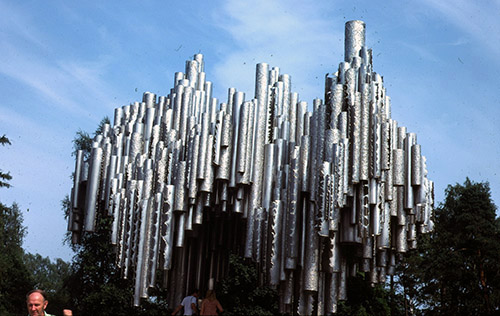![]()
Short introduction
We have been practicing digital history for almost two decades now, and in this unit I want to give you some background to the local university centers, because they have all been pioneers in developing new digital techniques and apps, for example, George Mason's Omeka and Zotero or the Scholar's Lab Neatline. It is good for you to see the kind of innovative work being done in the field by our local universities.
In addition, the way that history has been displayed on the web has changed dramatically over time through web 1.0, 2.0, 3.0, etc. In this unit we look at some of the early historical sites (most of which are still relevant and useful) and how they have evolved over time.
There is quite a bit of introductory material to cover in this unit.
What you must do in this unit
- Read Rosenzweig's Introduction and Exploring the History Web.
- Read this week's note on the Local Digital History Scene. It's a little complicated but I also list some historic preservation resources (unit 8 has local history resources; unit 11 has a list of digital online archives; and unit 13 has genealogy materials).
- Read the note on the Evolution of the Digital Web.
- Watch the video on The Local Digital History Scene in Northern Virginia.
- Watch the video on the Evolution of the Digital Web.
- Acquaint yourself with local university centers that focus on digital history/humanities:
- George Mason University, the Roy Rosenzweig Center for History and New Media
- University of Virginia, The Virginia Center for Digital History, the Institute for Advanced Technology in the Humanities and the Scholars' Lab
- University of Richmond, the Digital Scholarship Lab
- University of Maryland, the Maryland Institute for Technology in the Humanities
- University of Maryland Baltimore County, Center for Digital History and Education
- Virginia Tech, Digital History Reader
- Northern Virginia Community College, Digi: The Loudoun Digital Humanities Project (no longer available)
- Let's also have a quick look at the local library scene and see what is being done in terms of digital collections/exhibits:
- The Virginia Room of the Fairfax County Library
- The Center for Local History, Arlington Public Library
- Genealogy & Local History (RELIC Resources), Prince William Public Library
- Alexandria Library, Local History/Special Collections
- Thomas Balch Library (Leesburg)
- Check out some of these really good digital history projects (You are free to suggest others to add to the list.).
Submit
- Create a blog (20 points) for your use in the course. Please email the URL of your blog to me for feedback before your submit the URL In Canvas.
- Post on your blog (5 points) (a) a quick review of what you found interesting about the work of our local digital history centers and (b) what you found most interesting in the Rosenzweig reading. Please let me know in Canvas when you have posted so that I can grade.
What you can do in this unit
- I have recently discovered other online "texts" that deal with the digital revolution in history. See, for example, Writing History in the Digital Age: a born-digital, open-review volume edited by Jack Dougherty and Kristen Nawrotzki and Peter Lunenfeld, Anne Burdick, Johanna Drucker, Todd Presner, Jeffrey Schnapp, Digital Humanities (2012). T. Mills Kelly, also at GMU, has published Teaching History in the Digital Age. See also, A Companion to Digital Humanities, edited by Susan Schreibman, Ray Siemens, and John Unsworth (2004!). If you wish, please take a quick look and let me know what you think.
Extra credit options
- Find materials (on the web) related to the differences in reading something online and reading something as a hard copy. Anything that you find, I can add to this unit's note.
Unit learning objectives
- Upon successful completion of this unit, you will be able to (1) demonstrate knowledge and evolution of the key local institutions focused on digital history and (2) to explain the development of web-based materials since the inception of the web and summarize how historical content has changed in design and complexity over that same period of time.
